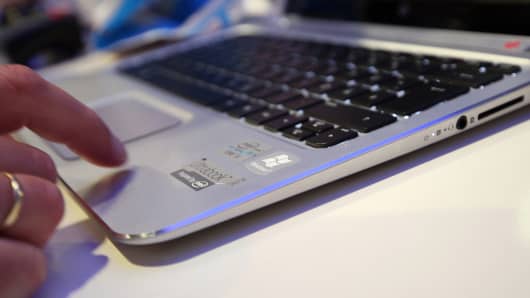Some 46 percent of all holiday electronics sales took place in the first two weeks of the season – the highest share in the past four years – while the last three weeks accounted for 54 percent of sales, NPD said.
The research underscores how important sales promotions are in encouraging consumers to make a purchase, especially as the consumer electronics sector still suffers from a lack of exciting must-have products.
Overall consumer electronics sales during the holiday season fell 7 percent to $13.7 billion, according to NPD. But the pace of the decline was slower during the heavy promotions.
In the first two weeks of the season, sales fell 3.7 percent from the same period last year, but in the last three weeks of the season, the pace of the decline accelerated to 11 percent.
"Consumer electronics remain trapped in a weak product cycle," said Baker. "Despite undeniable success in segments like soundbars, headphones with microphones, interchangeable lens cameras, cellular accessories and tablets, the inability of the CE market to find substantial new pockets of revenue looms menacingly over the industry's future."
(Read More: 10 Gifts Gadget Lovers Will Love)
New products have to resonate with consumers. Take the launch of Microsoft's Windows 8. The launch did little to boost holiday sales of Windows notebook computers, NPD said. By units, a sales measure that factors out fluctuations in price, sales of Windows computers fell 11 percent during the holiday. Even with the new products, average selling prices only rose $2 to $420.
The pricier touchscreen notebooks, which are 4.5 percent of Window 8 sales, fared better and sold at an average price of about $700. Sales of Windows notebooks, priced at less than $500 fell by about 16 percent, while notebooks that cost more than $500 rose 4 percent. Sales of Apple's Macbook dropped 6 percent, while the average selling price rose almost $100 to $1,419.
Price erosion was another big problem.
Sales of flat-panel televisions, which historically has been an important category in the electronics sector, was driven by sales of large-screen TVs at the expense of the once-dominant 40-inch to 49-inch segment this holiday season. Sales of flat-panel TVs with screens larger than 50 inches rose 46 percent by units and 19 percent by revenue, NPD said.
However, although flat-panel TV sales managed to grow by volume by 1.5 percent, the average selling prices of these products fell by more than 8 percent to a record low of $364.
One thing to note: NPD's definition of electronics items excludes popular devices such as Apple's iPad as well as Amazon's Kindle, Microsoft's Surface, mobile phones and video games.



